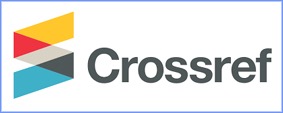Tindak Tutur Ilokusi dalam Film Animasi Upin dan Ipin Episode “Seronoknya Wisata Air” serta Implikasinya Terhadap Pendidikan Karakter Anak
DOI:
https://doi.org/10.29240/estetik.v2i2.1191Abstract
This study aims to describe the forms of illocutionary speech acts in the animated film Upin & Ipin in the series "Seronoknya Wisata Air". In addition, this study also describes the form of character education contained in the animated film. Furthermore, this study uses a qualitative method with a descriptive approach. The data source in this study obtained conversations in the animated film Upin & Ipin obtained from Television. Data collection techniques in this study used the note taking technique, by noting every conversation that contains illocutionary speech acts. The data validity technique in this research is in the form of theory triangulation, data analysis using interactive analysis. The results of the study show that in the animated film Upin & Ipin the series of "Water Tourism" contains illocutionary acts. For example assertive, directive and expressive. In this study, researchers also found the value of character education contained in the Upin & Ipin animated film "Seronoknya Wisata Air", for example disciplinary value, creative value, value of achievement and friendly values.
Keywords: Illocutionary Speech Acts, Upin & Ipin Animated Film, Character Education
Downloads
References
Achsani, F. (2019). Aspek Moralitas dalam Anime Captain Tsubasa Melalui Penggunaan Tindak Tutur Asertif dan Ekspresif. Lingua, 15(1).
Firmansah, M. L. H. (2018). Memahami Nilai Spiritual dalam Film Upin-Ipin Sebagai Tayangan yang Layak Ditonton Anak Usia 2 - 6 Tahun. SELING?: Jurnal Program Studi PGRA, 4(1), 51–67.
Hestiyana. (2018). Kesantunan Tindak Tutur Direktif pada Tuturan Anak dan Oranf Tua di Desa Ngumbul, Kabupaten Pacitan. Madah, 9(1), 101–116.
Hidayat, M., & Hamdani, M. S. (2018). Representasi Toleransi Beragama Menurut Pandangan Islam Dalam Serial Animasi Upin Dan Ipin (Analisis Semiotika Episode Berjudul “Gong Xi Fa Cai” Dan “Dugaan Ramadhan”). Jurnal Ilmiah Mahasiswa FISIP Unsyiah, 3(2), 566–579.
Kurnia, R., & Yeni, S. (2018). Pengaruh Media Pensil Karakter Animasi Upin dan Ipin Terhadap Kemampuan Menulis Anak. JURNAL PENDIDIKAN USIA DINI, 12(2), 341–350.
Lickona, T. (2013). Mendidik untuk Membentuk Karakter (Bagaimana Sekolah dapat Memberikan Pendidikan Tentang Sikap Hormat dan Bertanggung Jawab). Jakarta: Bumi Aksara.
Rosita, F. Y., & Ferdian, A. (2018). Pendidikan Karakter dalam Novel Cinta 2 Kodi Karya Asma Nadia. Alayasastra, 14(1), 55-71.
Sari, A. L., Nariyah, H., & Wihayati, W. (2019). Studi Fenomenologi Film Animasi Upin dan Ipin di MNC TV dalam Membentuk Perilaku Imitasi pada Anak di TK Al-Muhibbin Kecamatan Sumber Kabupaten Cirebon. Signal, 7(1), 15–26.
Yasa, G. P. P. A. (2019). Animasi Si Uma: Representasi Lokalitas dan Budaya Bali. In Prosiding Seminar Nasional Desain dan Arsitektur (SENADA) (Vol. 2, pp. 333–339).
Yule, G. (2006). Pragmatik. Yogyakarta: Pustaka Pelajar.
Downloads
Published
How to Cite
Issue
Section
Citation Check
License
Copyright (c) 2019 Bini Lestari

This work is licensed under a Creative Commons Attribution-NonCommercial-ShareAlike 4.0 International License.
Authors who publish with ESTETIK : Jurnal Bahasa Indonesia agree to the following terms:
- Authors retain copyright and grant the journal right of first publication with the work simultaneously licensed under a Creative Commons Attribution-NonCommercial-ShareAlike 4.0 International License (CC BY-NC-SA 4.0) that allows others to share the work with an acknowledgment of the work's authorship and initial publication in this journal.
- Authors are able to enter into separate, additional contractual arrangements for the non-exclusive distribution of the journal's published version of the work (e.g., post it to an institutional repository or publish it in a book), with an acknowledgment of its initial publication in this journal.
- Authors are permitted and encouraged to post their work online (e.g., in institutional repositories or on their website) prior to and during the submission process, as it can lead to productive exchanges, as well as earlier and greater citation of published work (See The Effect of Open Access).






